We recently connected with Aimee Hofmann and have shared our conversation below.
Aimee, looking forward to hearing all of your stories today. Did you always know you wanted to pursue a creative or artistic career? When did you first know?
I’ve always been artistic my whole life. Growing up, I studied piano, dance and was constantly sketching/drawing. Eventually, as an adult, I took the path of pursuing a corporate career. I graduated from NYU with a marketing degree and worked in marketing/PR for a few years after graduating. However, being in a highly-stressful, fast- paced and demanding environment of the corporate world made me constantly search for creative outlets. In 2006, 16 yrs ago, a sudden disability led to a career pivot. I was struck with transverse myelitis, an inflammation of the spinal cord which paralyzed me from the waist down. During my 2 month hospital stay, I took part in a therapeutic art program for traumatically injured patients. As soon as I started painting, I felt a sense of peace wash over me. I discovered that is ultimately art that helped with my healing process mentally and physically. It was then that I knew painting was my passion and that joy and hope was possible again. I continued to paint over years in between having and raising two kids. Right at the start of the pandemic, I started a more disciplined art practice, put together my website and started selling/marketing my work online. I was able to apply my past marketing expertise into my own business. The rest is history!
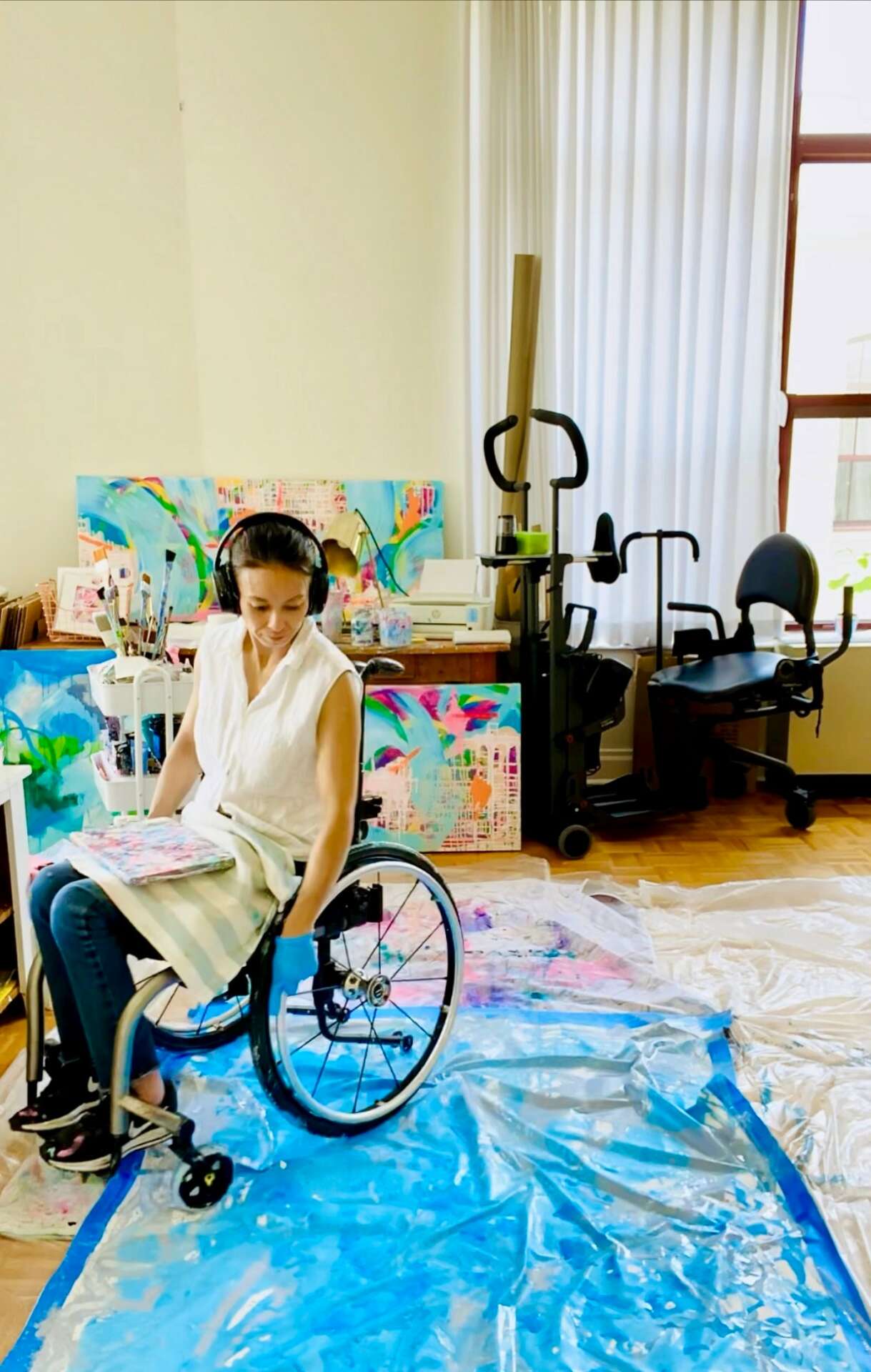

Awesome – so before we get into the rest of our questions, can you briefly introduce yourself to our readers.
I paint abstract art using mainly acrylics on canvas or paper. I like mixing different consistencies of paint such as really fluid or heavy bodied paints. On occasion, I work with mixed media which may include gold foil, dried/solidified paint skins or torn paper. I use a wide range of techniques such as pouring, splattering or a stamping technique with old wheels of wheelchairs. I’m notoriously known to use unconventional tools such my “painting wheelchair” that I roll over the canvas with to blend/mix paints. As a result, they create these beautiful track marks all over the canvas.
I use my wheelchair to encourage the art viewer to see the wheelchair as tools or catalysts that can move things forward and create something beautiful, as opposed to having negative connotations about disabilities. I use a lot of symbolism in my work to give a piece meaning. I love how the track marks represent the idea of embracing everyone’s unique mark in this world, enforcing the idea of inclusivity. I also paint a lot of swirls and gestural marks with different sized brushes. The swirls lead the viewer’s eye on a journey around the canvas and back to where it started– similar to life when we go through adversities or ups and downs, we end up where we were meant to be. Everything, eventually, comes full circle.
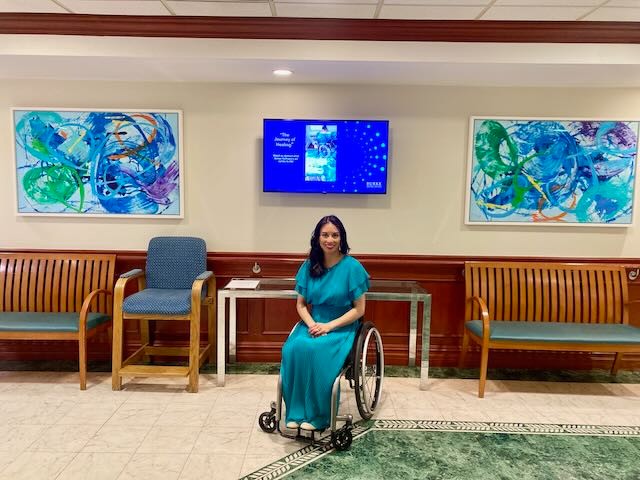
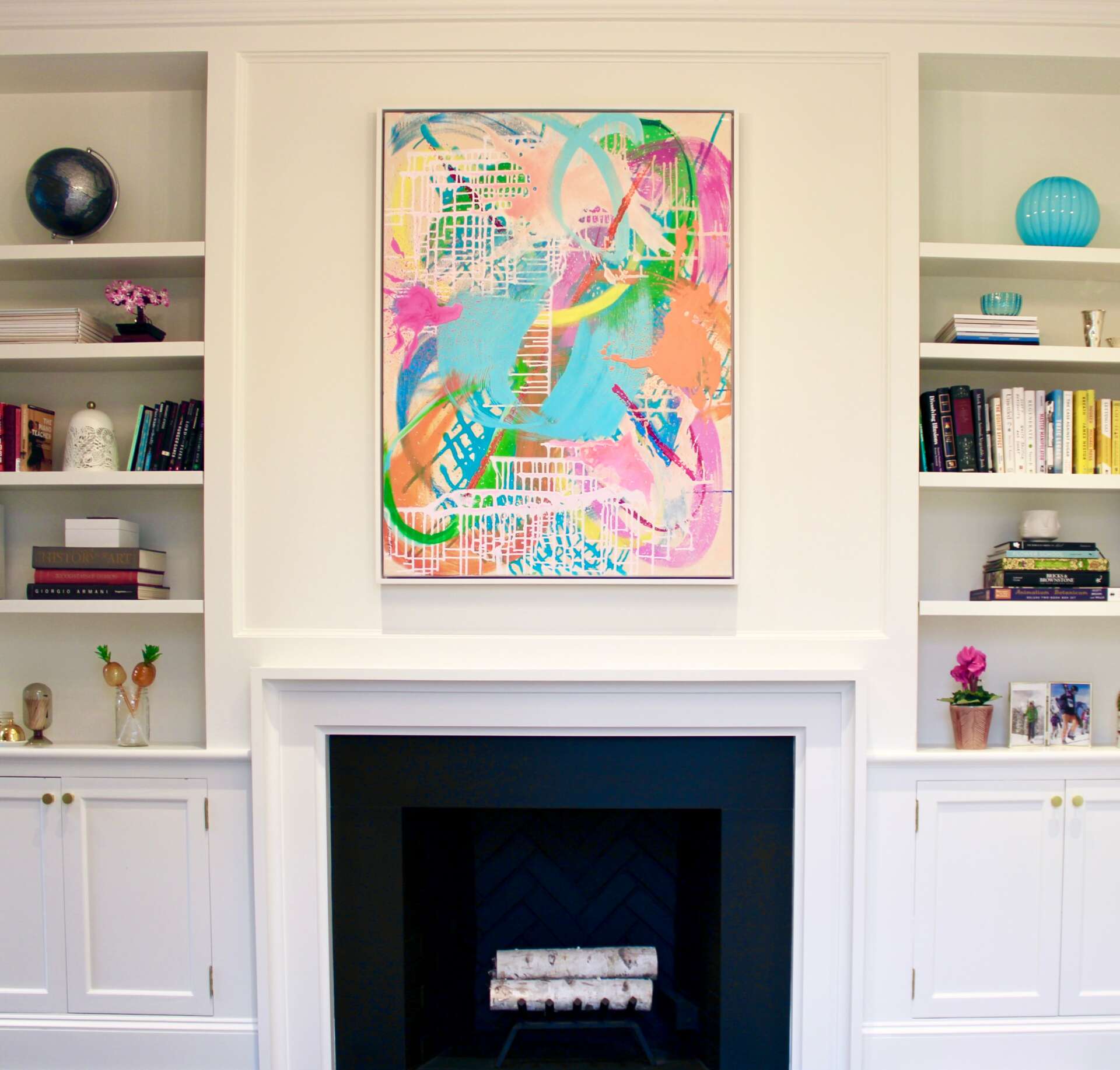
What’s the most rewarding aspect of being a creative in your experience?
As a mom, artist, business owner & survivor of adversity, the most rewarding aspect is setting an example for my children. Whether art is in their future or not, I’m showing them they can pursue their passions no matter what adversities/obstacles they may face in life. I’m also showing them that if they really want to achieve something, it takes hard work, dedication, grit and perseverance. If they fail at certain things, I’m always encouraging them to get back up, stick to it and try again.
The second most rewarding thing is that art has given me peace, joy and hope during the most difficult time in my life.
When I can bring those same positive emotions into someone else’s living or working spaces, then I feel a sense of accomplishment that I’ve done my job as an artist.
In addition, as an Asian female with a disability, I belong to minority groups that have not have always been seen, heard or had a seat at the table in the past. Being an artist gives me a strong sense of empowerment. My art is my way of reclaiming the narrative on all my identities in my own way. My art is my voice. When individuals or corporations acquire my art, it tells me that my message is coming across, that they understand me and my personal story that I’m trying to express.

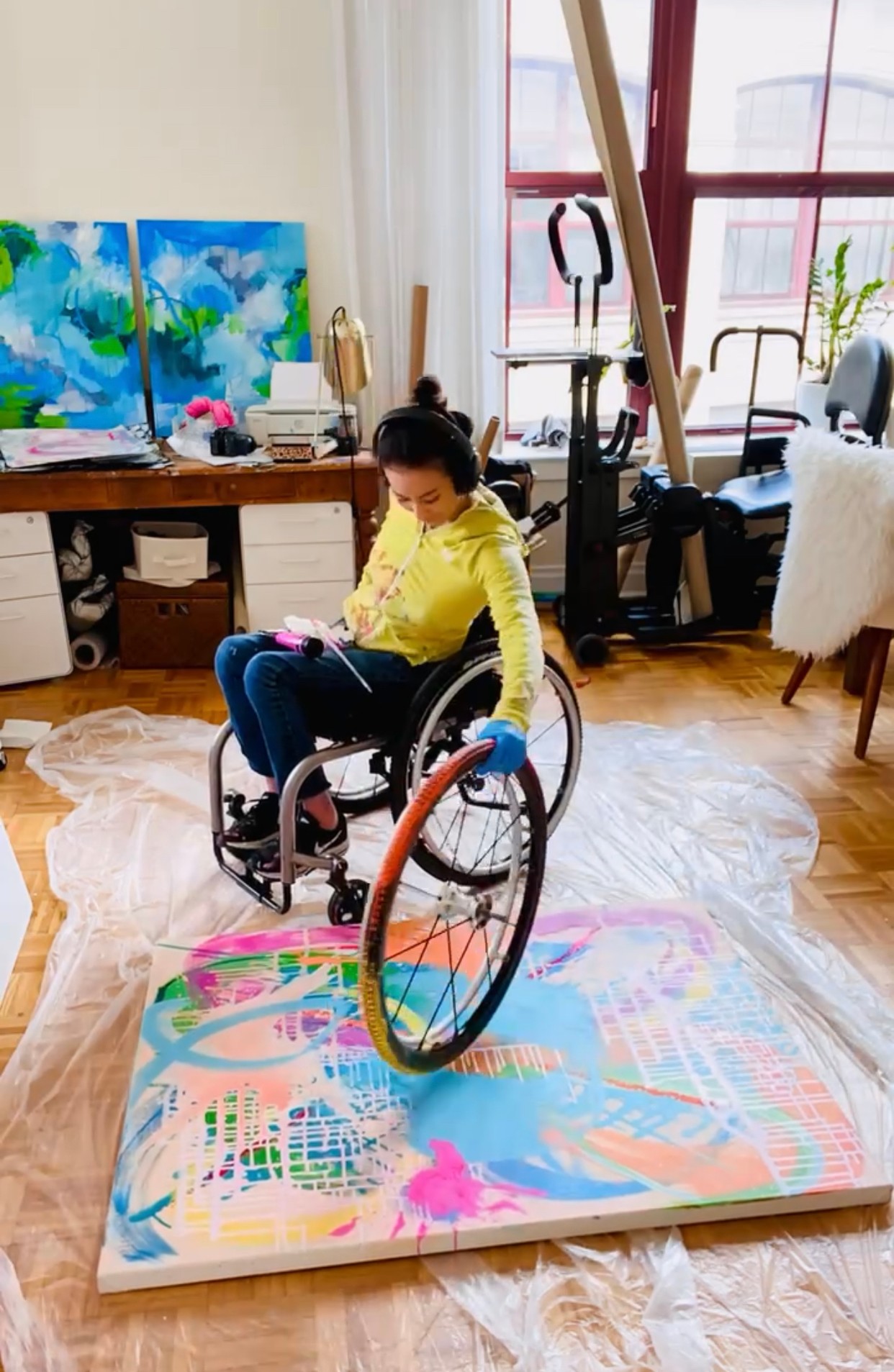
Is there something you think non-creatives will struggle to understand about your journey as a creative?
Regardless, running an art business is always hard work for every single artist even though we are doing something we love. We oversee so many aspects of the business (other than painting) such as marketing, packing, shipping, weekly administrative duties, finance, public speaking, interviews with media, participating in events/fairs, etc.
However, as a person with a disability, my journey in the creative world is rather unique. I’m overseeing all aspects of the business but simultaneously, I’m constantly trying to break that glass ceiling about disabilities and change perceptions that people have about us. I want people to see me as an artist, not just “the artist with a disability” or “the artist in a wheelchair.” We have the potential to succeed in industry we want to excel and thrive in. We just need people to be more open minded about giving us opportunities. People with disabilities deserve to live full lives and make a sustainable living doing something we are passionate about since we are valuable members of society. Therefore, I make sure symbolisms of inclusion and fair representation is clearly expressed in my work.
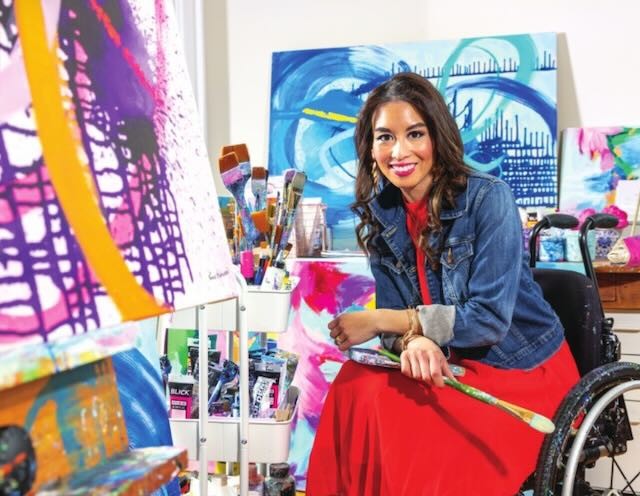
Contact Info:
- Website: https://aimeehofmannfineart.com
- Instagram: @aimeehofmannfineart
- Facebook: @aimeehofmannfineart
Image Credits
Ken Gabrielsen Photography


